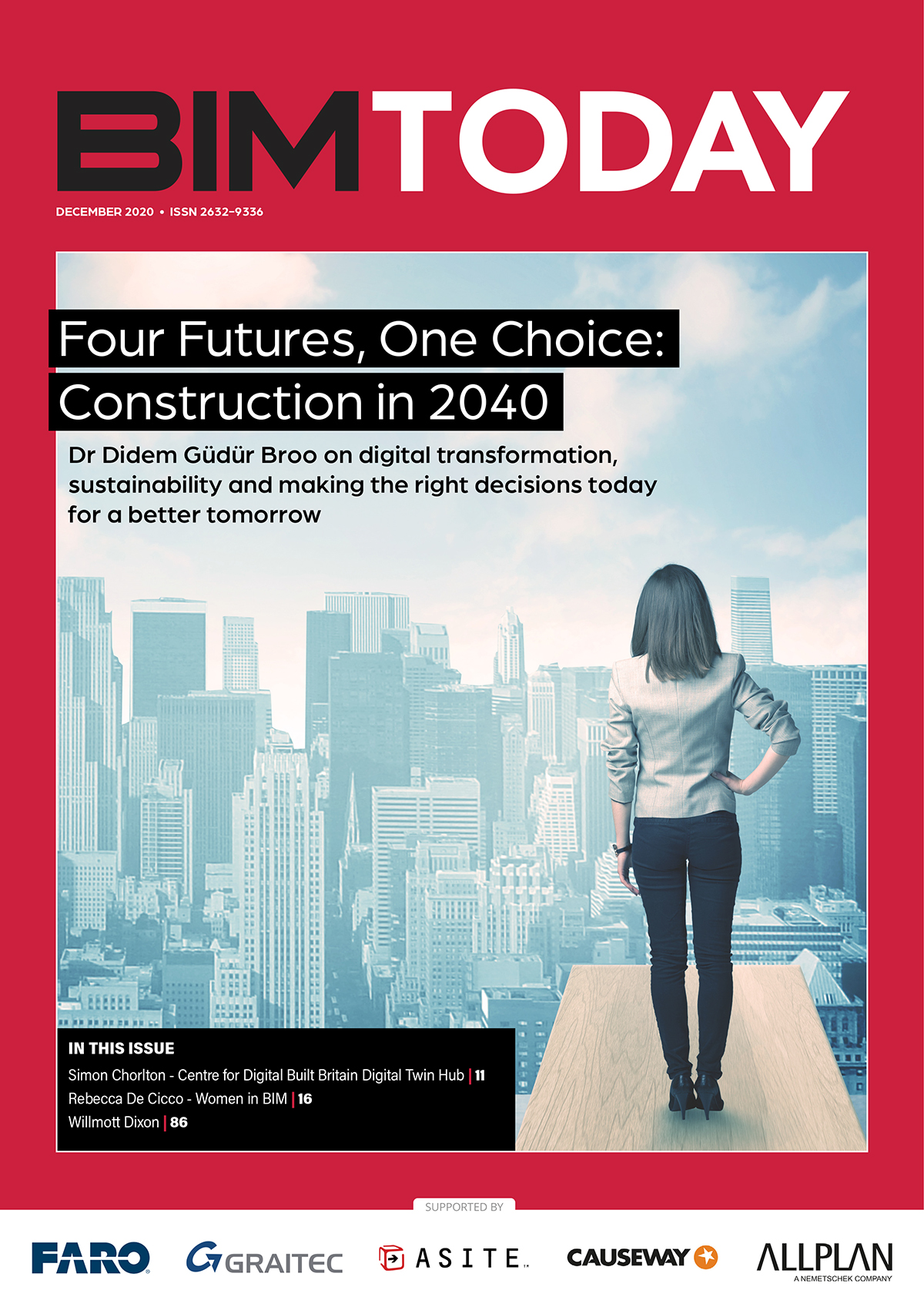Welcome to BIM Today December 2020. In this issue, we look at the key programmes, initiatives and organisations that have been helping to drive forward the digital transformation and modernisation of construction during this most challenging of years
In the cover story of BIM Today, Dr Didem Gürdür Broo lead author of the Centre for Digital Built Britain’s new study, Four Futures, One Choice, discusses the potential scenarios it lays out for a digital built Britain in 2040, while Sam Chorlton, chair of the CDBB’s Digital Twin Hub, looks back on a successful first six months.
We also hear from Women in BIM core team members Rebecca De Cicco, Vicki Reynolds and Dr Jenni Barrett about technology trends in 2021, and David Philp, digital impact director at the Construction Innovation Hub, explains why Government Soft Landings can help built assets to deliver whole-life value to owners and users.
There’s much more besides. BIM4Water’s Jamie Mills and Clare Kovacs discuss the challenge of “planning the unplannable” for 2021; Dr Sonia Zahiroddiny highlights the role of digital engineering in delivering Europe’s largest infrastructure project, HS2; and Gillian Charlesworth, chief executive of the Built Research Establishment, looks at the development of Nabers UK to measure the energy performance of buildings.
We also have project case studies highlighting the application of BIM and digital technology in projects from Brighton and Edinburgh to Sweden, the United States and Peru.
Here’s a selection of what’s in store:
A new study developed by experts at the Centre for Digital Built Britain examines four scenarios for how the construction sector and the built environment will look by 2040. Lead author Dr Didem Gürdür Broo discusses how the choices we make today can shape a better future.
The Centre for Digital Built Britain’s Digital Twin Hub (DT Hub) has signed up more than 700 members since it was launched in March. Find out more about this exciting, fast-growing community and how it can help you to accelerate your digital twin strategy.
Women in BIM core team members Rebecca De Cicco, director of Digital Node, Vicki Reynolds, chief information officer at i3PT Certification, and Dr Jenni Barrett, director at coLAB and senior lecturer at the University of Central Lancashire, discuss what has impressed them the most in the past five years and what future technology trends they predict for 2021.
David Philp, digital impact director for the Construction Innovation Hub, highlights the benefits the Government Soft Landings (GSL) approach brings to improving performance and outcomes of our built assets to ensure they improve whole life value to users, owners and society at large.
The newly elected vice-chair of BIM4Water, Clare Kovacs (national digital rehearsal lead for MWH Treatment) and current chair Jamie Mills (global BIM manager for Xylem) reflect on and discuss some of the strides forward and developments made by the BIM4Water group over the challenging months that this year has brought.
HS2 is the first major infrastructure programme to adopt digital engineering, with BIM at its core, at the very earliest stages of the project to allow future benchmarking to be delivered over the entire lifecycle – and in real time. Head of digital engineering Dr Sonia Zahiroddiny explains how it works.
Meeting ambitious sustainability targets requires us all to pitch in, says Building Research Establishment chief executive Gillian Charlesworth.
A development in one of the trendiest neighbourhoods of Stockholm has invested in automatic 3D scanning tech to track progress and detect construction deviations in real-time.
The Museum of Flight has explored the unlimited potential of 3D laser scanning with Datum Tech Solutions.
10. 4D BIM visualises complex mining plant in Peru
4D BIM has been used to visualise and report on the construction of a tailings reprocessing plant at South America’s largest tin mine.


